Back To Blogs / Blogs / Apr 2020
Bengal's Proverbial 'Little Europe' - The Lower Ganges
The proverbial 'Little Europe' by the Bhagirathi-Hooghly river still holds impressions of waves of European culture. Rampant with historical influences of the British, the Dutch, the Danes, the Portuguese and the French, these patches of multinational interests do weave a breathtaking portrait. Across the Bhagirathi-Hooghly river, which is also referred to as the Lower Ganges, one can still see the several settlements that came into existence a long time ago.
An evident history of churches, cemeteries, mansions, and clock towers spells over 400 years of their presence in the Lower Ganges. The little remains of these European colonial settlements can usher you into a rich history of trade and culture. While several lost architectures have forever erased the impressions of the Germans and Austrians from the Bhagirathi-Hooghly river area, the 'Little Europe' or the Lower Ganges still is one of the best-kept secrets of Bengal.
These areas need heavy preservation and looking after owing to the influx of many tourists and travellers interested in indulging in the rich history of the Lower Ganges. In 2015, the state government of West Bengal, India, with sponsorship from World Bank and Union Roads and Waterways Department proposed a ?680-crore project to build a tourist circuit along the river banks of the Bhagirathi-Hooghly.
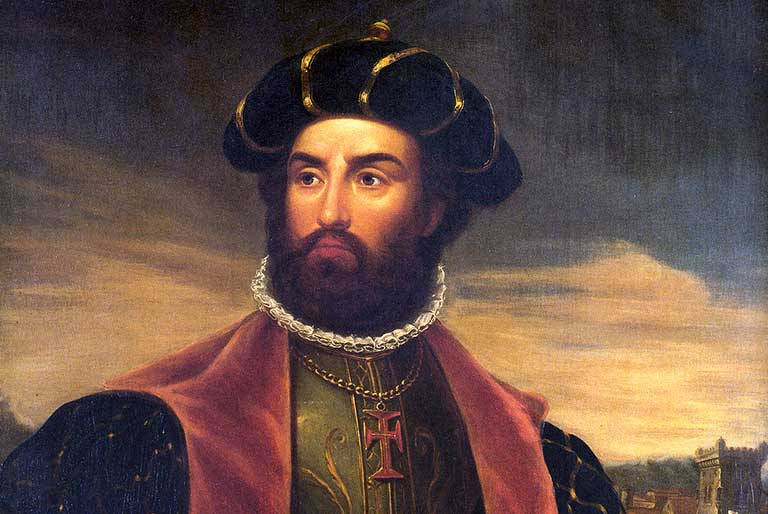
Vasco da Gama, the Portuguese explorer
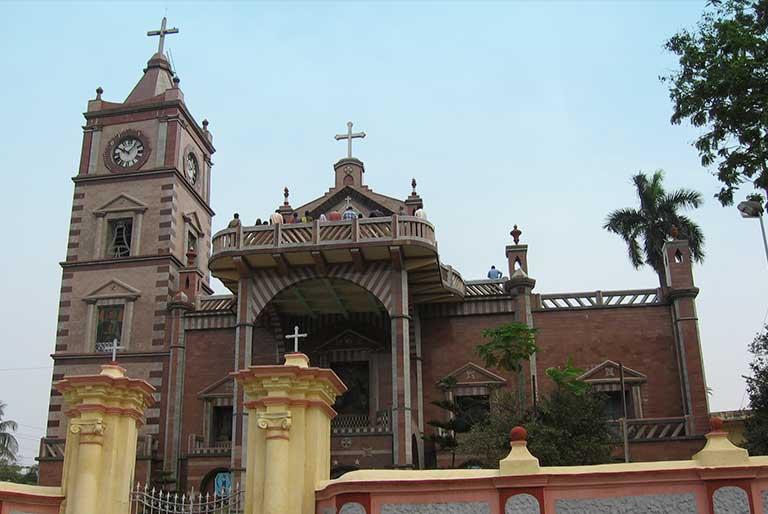
Portuguese Basilica of the Holy Rosary
Numerous pockets of architectural heritage tucked along the river's bends
The colonial remains on the Lower Ganges banks take you back to a simpler time and make you wonder how the trade and culture used to be. It all started when in circa 1498, Vasco da Gama, the Portuguese explorer, set foot in the area. The Portuguese's interests in the now-West Bengal's trade routes increased, and they soon built a settlement in the Bandel area. Soon after that came the Dutch in Chinsurah, the Danish in Serampore and the French in Chandannagar.
This was long before the British even had an idea, let alone interest, in India and its trade routes. With time, these European settlements kept peacefully encroaching towards the islands of Bengal; their only objective being in the trade routes and settling down in the Lower Ganges area. The Hooghly river was their only source of navigation in the thick area in those years, which is why we see an abundance of settlements along its banks.
With more Europeans settling in the Lower Ganges area, the trade continued to flourish, thus attracting the attention of more Europeans. Fortified settlements started coming into the picture. With more houses and storehouses came Europeans who lived there for longer times. This eventually led to the construction of churches and other places of worship. As and when time went by, with their children taking on their jobs, cemeteries were constructed too.
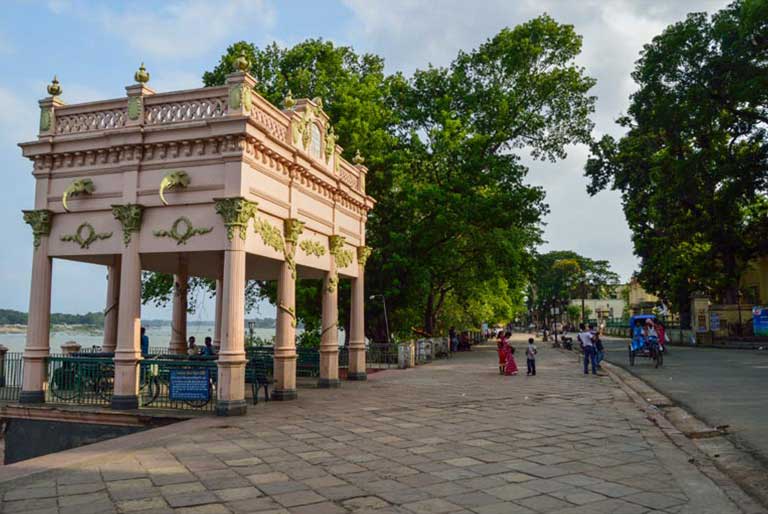
Chandannagar Strand
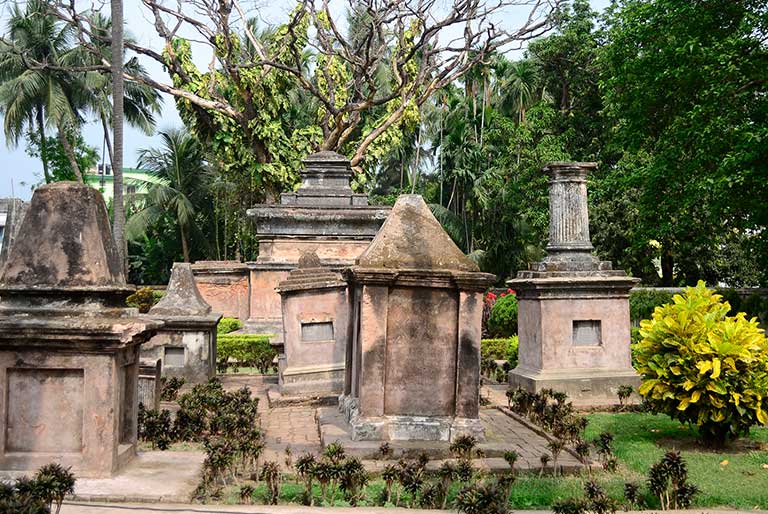
The Dutch Cemetery of Chinsurah
The first glimpses of Europe on the Ganga
It was around 1599, roughly a hundred years after the first Portuguese set foot in the Lower Ganges, that the Portuguese built the first Christian church of Bengal. About thirty years after its construction, in 1632, Shah Jahan, the Mughal Emperor of India, attacked the settlement, destroyed it and took its head priest, Father Joan De Cruz, prisoner. He was thrown in front of an elephant to be killed, but the elephant is said to have, instead, lifted him and seated on its back.
Shah Jahan was floored by this episode and decided to pardon the Portuguese traders. He gave them fresh land as a gift for them to build their churches and expand their settlements. In 1673, the French settlers in Chandannagar received permission from yet another Mughal Subedar, Ibrahim Khan, to establish a French trading port on the Hooghly river. Later, for a short while, Chandannagar was also considered as a major European trade centre.
In 1825, the Dutch settlement in Chinsurah was destroyed to ruins when the British came into India and demolished the Dutch fort of Gustava. Over the years, many churches, clock towers, and trade buildings of the Dutch were destroyed by the British. However, the Dutch cemeteries constructed under the ancient Bengal trees survived. The earliest grave in this cemetery is said to have dated back to 1743.
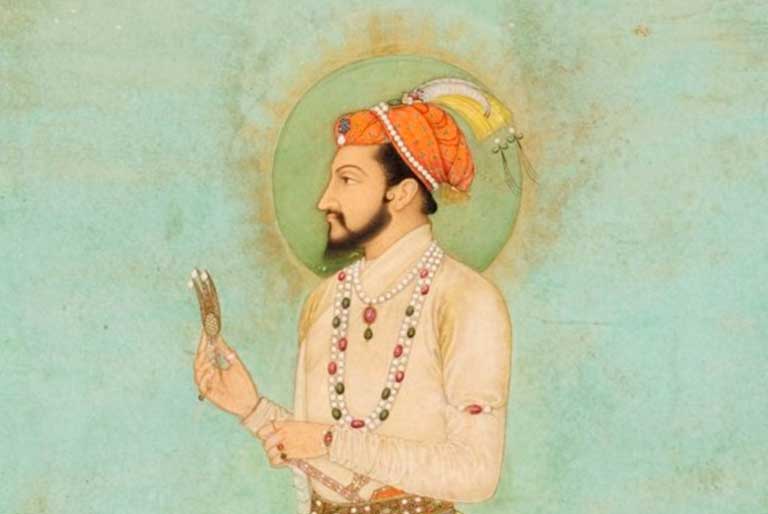
Shah Jahan, the Mughal Emperor of India
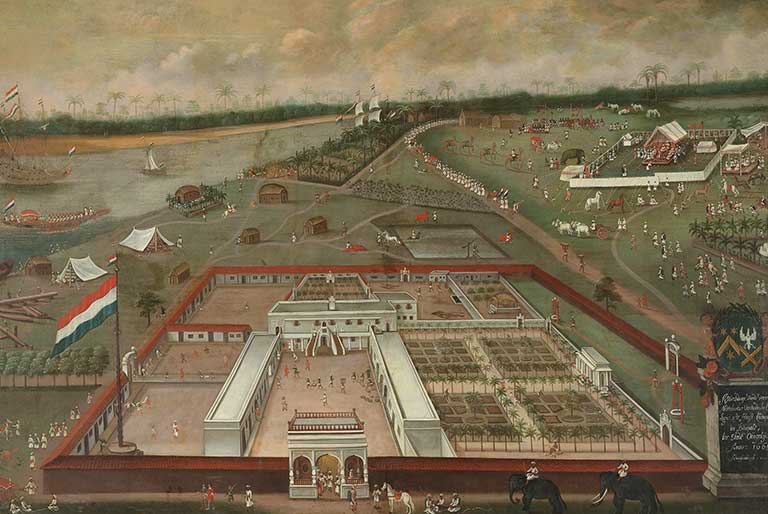
Shah Jahan, the Mughal Emperor of India
Rich architecture still stands strong in the Portuguese stronghold – Bandel
When the Portuguese arrived in Bengal, the Mughals were the reigning rulers of India. They had been ruling India for quite a long time then. When the Portuguese began trading in the Lower Ganges area, they never obtained any sort of permission from the Mughals in the first place. Trade continued to grow, and the region became flourishing both in trade and culture. The Mughals took notice of these events and started becoming awry.
After the Shah Jahan and Father Joan De Cruz episode, there was another episode that is still spoken of fondly in association with the Portuguese settlements in the Lower Ganges. A local Christian named Tiago tried saving the statue of Mother Mary during a siege. In a desperate attempt, he jumped into the Hooghly river with it. No one could find both Tiago and the statue, but when the church was finally inaugurated, the statue was found on the river bank.
The Portuguese were so elated by the heroic feat of Tiago saving the statue of Mother Mary that they decided to use that very statue to be installed in the church. They named it “Our Lady of the Happy Voyage.” While these inaugurations were in progress, it is said that another miraculous episode took place. A storm-borne Portuguese ship, tattered and destroyed in many places, reached the banks of the Hooghly river where the Portuguese had settled.
It is said that the Captain of the ship prayed to the Gods that if the ship survived the storm, he would offer its mast to the first church that they encounter. He stayed true to his prayers and promise and did so. The Portuguese settlers accepted his gift, and the mast is still in this church. Now, the Portuguese translation for the mast is 'bandel,' and so the Portuguese named this church the Bandel Church. The entire area of the Portuguese church came to be known as Bandel.
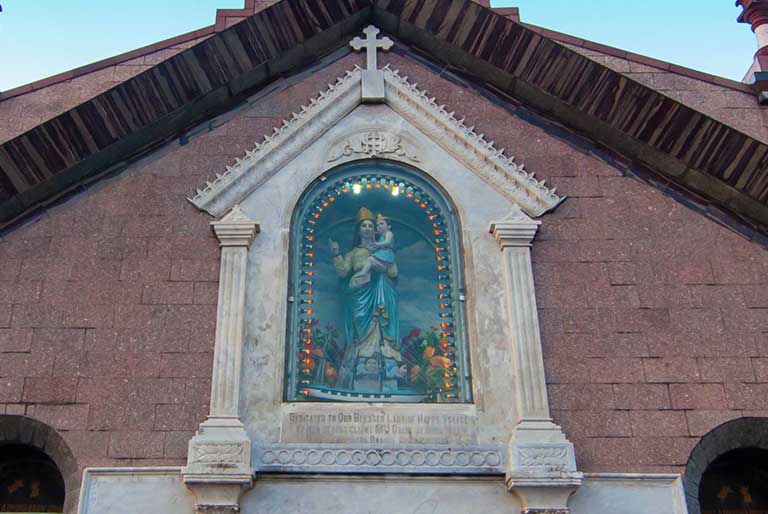
Our Lady of the Happy Voyage
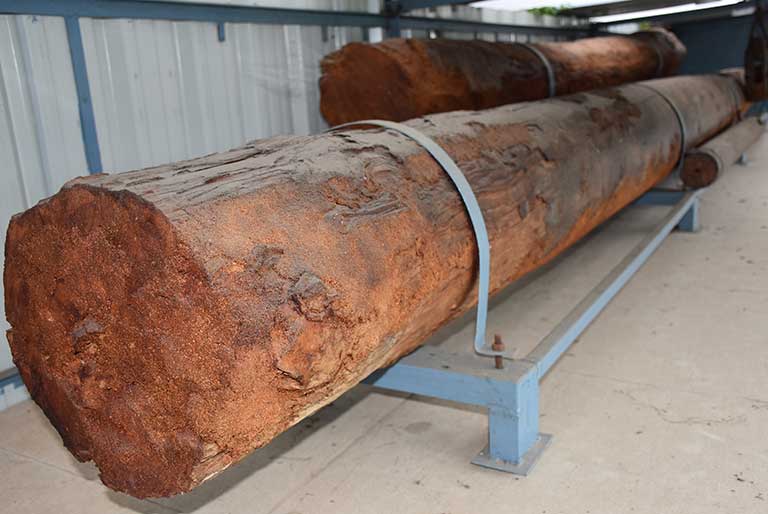
The Mast of Portuguese Ship at Bandel Church
The Dutch instilled the Lower Ganges with historical wonders
In 1615, the Dutch settled down in the Chinsurah area of current West Bengal. Today, the town of Chinsurah is just like any other small and unplanned town of India; however, back in the days of the Dutch colonies, Chinsurah was considered as one of the most beautiful towns. Fort Gustava was one of the prime attractions of Chinsurah and was also responsible for the flourishing Dutch trade on the riverfront of the Dutch East India Company.
In 1825, after nearly spending 200 years of their life there in Chinsurah, the Dutch traded Chinsurah for the island of Sumatra with the British. In 1914, the British constructed the Chinsurah Clock Tower. It was constructed in honour of the British Emperor Edward VII, and it even houses two medallions and two plaques of him. Due to the British takeover, Chinsurah buildings have a touch of Dutch and British influences, along with indigenous design.
The District Court, the Hooghly Madrassa, the Dutch Villa, the Dutch Church and the Hooghly Mohsin College are all remnants of the Dutch life in the Lower Ganges. There is also the Dutch cemetery, which is now a protected heritage site. Current-day Chinsurah is only five kilometres away from Bandel. It is fascinating to see how close these European settlements were to each other and how intricately they influenced each others trading ways and routes.
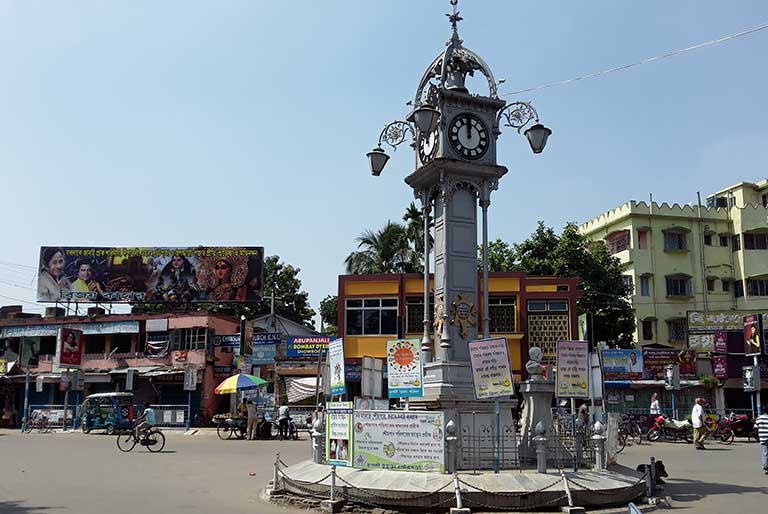
Ghorir More Edwardian clock tower
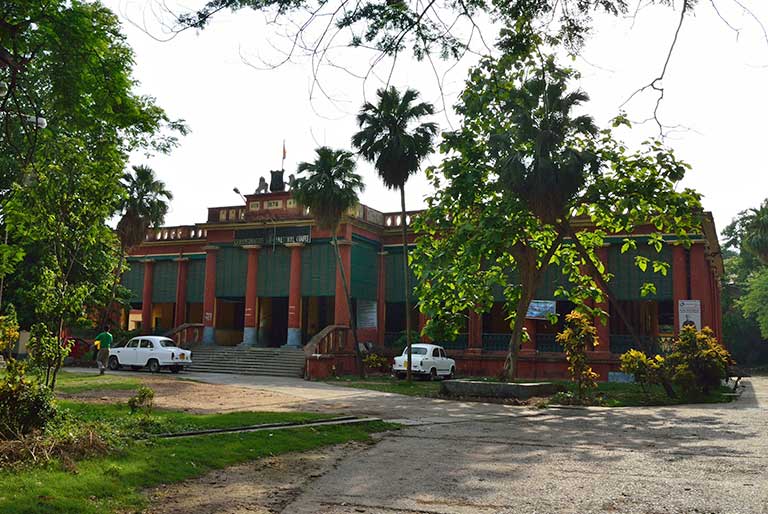
The District Court Chandernagore
Educational and reformative buildings were the works of the Danes
The Danes came into the picture quite a long time after around 1752. The Danish colony was maintained in present-day Serampore. Three Danish missionaries are the most talked-about whenever the Danish settlement in the Lower Ganges is discussed. Joshua Marshman, Willaim Ward and William Carrey worked day-in and day-out to spread the cause of education and to reform the ways of the Danish society in the Bhagirathi-Hooghly area.
Their efforts worked miraculously well since, in 1800, the Serampore Mission Press was established. It not only printed thousands of copies of the Bible translated into Bengali, but it also printed the Bengali translations of the Ramayana and the Mahabharata, the two sacred scriptures of the Hindus. The press became famous, and their readership kept multiplying. They soon released two newspapers - Friends of India in English and Samachar Darpan in Bengali.
Education was always at the forefront of the Danish since they also constructed the Serampore College, the oldest degree college in Asia. After constructing several Danish-influenced buildings, the Danish Governor sold Sermapore to the British East India Company. Recently, Denmark took an interest in their heritage that they left back in Bengal and restored a Tavern at Serampore. This place now serves as a great spot for tourists to have a splendid meal.
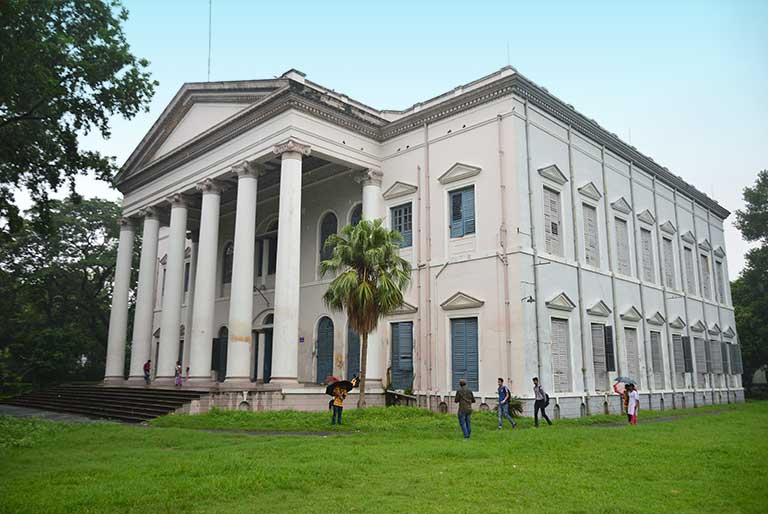
Serampore College, Hooghly
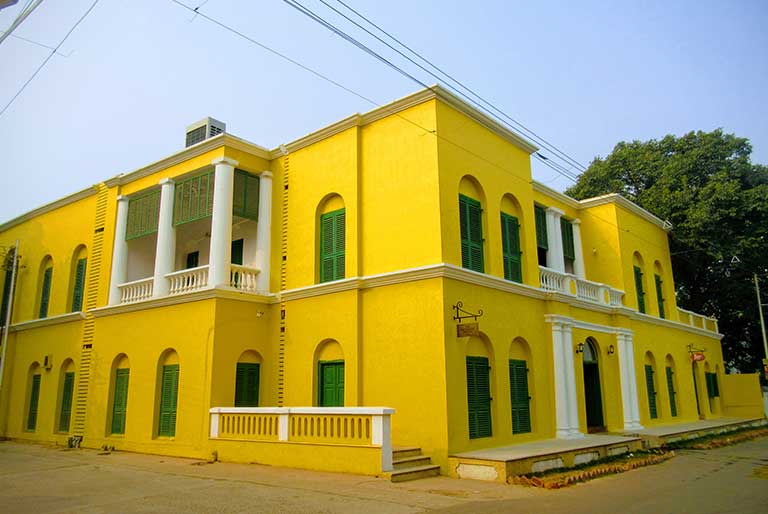
The Denmark Tavern of Serampore in West Bengal
The many delights of the French colonies in Chandannagar continue to live
The French arrived in the Lower Ganges area about 60 years after the Dutch and the Danes arrived. However, the French could never be driven out of their French colonies in the Lower Ganges even when the Dutch, the Danes, the Germans, the Austrians, and even the Portuguese were driven out by the British. The French colonies along the Bhagirathi-Hooghly continued to flourish even after Indian Independence up until 1950.
They settled down in the Chandannagar area, ten kilometres from the Portuguese settlement in Bandel. The most famous tourist attraction of Chandannagar is the Strand. Located on the Hooghly river, it boasts heavily of French architecture. The Sacred Heart Church is not far from the Strand and is famous for its stained glass windows. Located nearby is also the mansion of a former French commander. It has now been converted into the Chandannagar Museum and Institute.
The French not only indulged in their own French architecture but also built many temples. However, not much of these temples survive in the present day. The many memorabilia and other artefacts can be found in the Chandannagar Museum and Institute, also referred to as Institut De Chandennagor. What's surprising is that if you get in touch with the locals, they can guide you to old French bakeries in Chandannagar that still bake bread the old-fashioned French way!
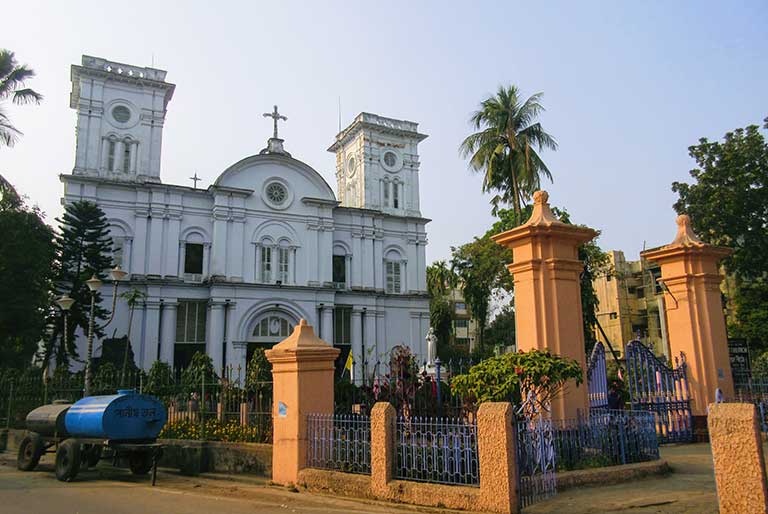
The Sacred Heart Church in Chandannagar
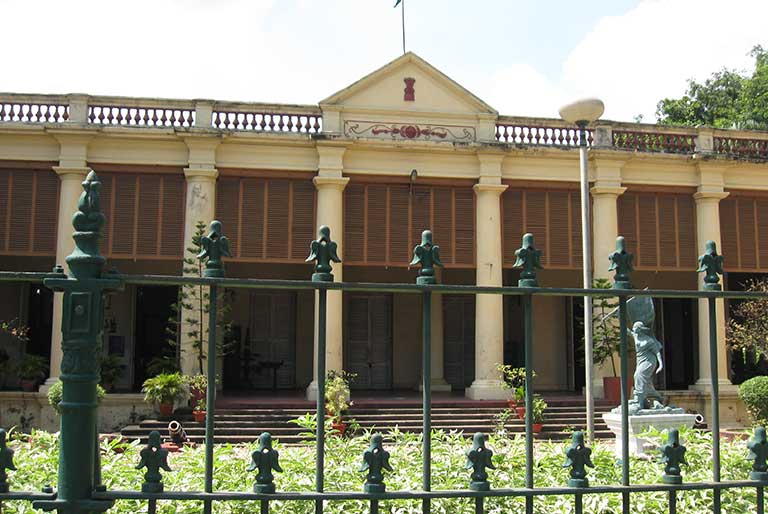
Chandannagar French Museum